The Article
THE QUEEN STUDIO COLLECTION PT.2: THE ENGINEERS
20th May 2016
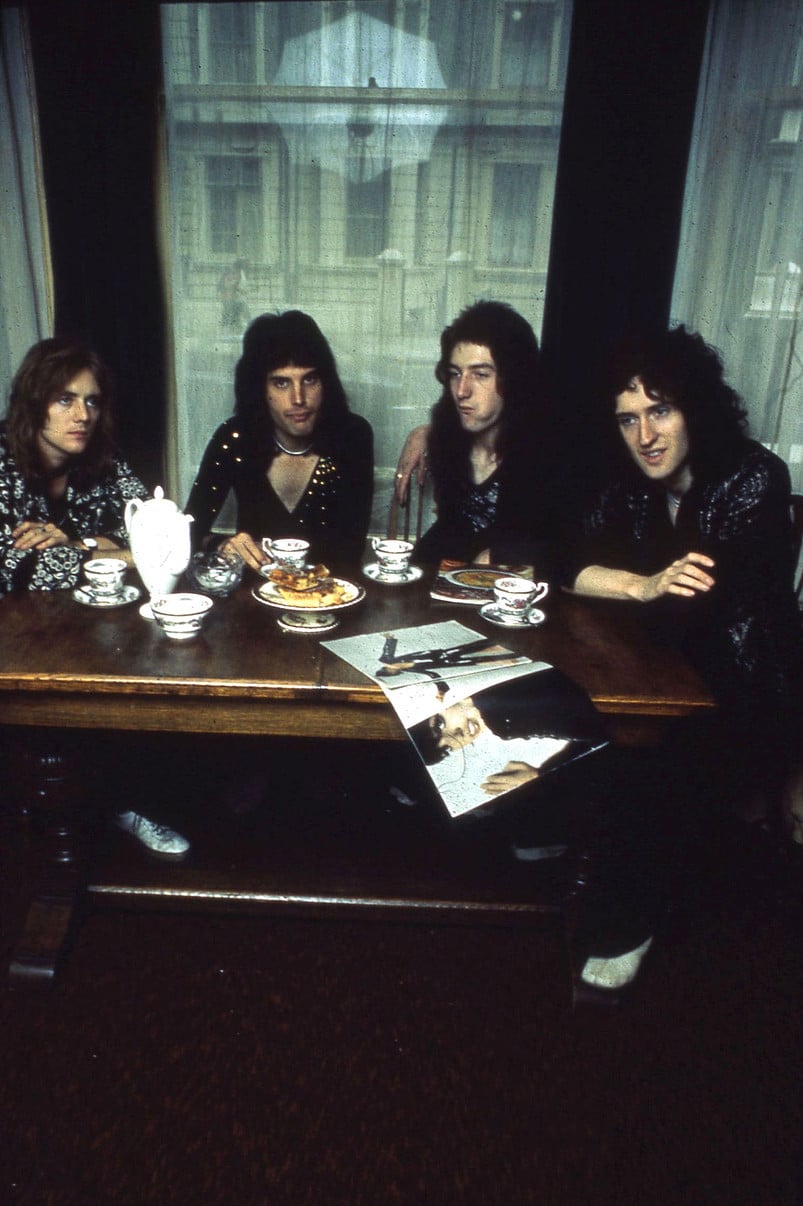
The first part of this feature addressed a detailed review of the Queen vinyl box set but this section focuses on the engineers behind the production. Paul Rigby talks to Mastering engineer, Bob Ludwig, half-speed mastering engineer, Miles Showell and Rega boss and engineer who created the Queen turntable, Roy Gandy.
“From my point of view, I was flattered to death. It was such a British product. There were so many great British mastering engineers to choose from so to even reach across the Pond to give me a try… To be working on Queen materials was ‘Wow!’”
So said Bob Ludwig, who was chosen as the principle Mastering Engineer for this box set from a pack of well known names who were all asked to master the sample Queen track, Another One Bites The Dust, as a an audition piece. Queen then blind tested each received master disc and chose the one for them.
Ludwig was the winner but he thanks Tim de Paravicini for his assistance, “I used his electronics. I think that helped, in this case. I do have lots of electronics to choose from, though: at least six different kinds here. I didn’t use the Paravicini electronics for most of the songs but, for that cut? It seemed to fit.”
When he finally set to work, Ludwig utilised both the ¼ inch and, on a rare occasion, ½ inch tape, “You can’t hear the defects on the master tape via vinyl because vinyl masks them immediately but if you could hear the original master tapes in the studio you would hear little ticks, pops and little edits that normally would sound fine but if you examined them under a huge microscope and cranked the power to 400 it was like, ‘Well, maybe we could could change things a millisecond here or there.’ All these things could only be fixed in the digital domain.”
Ludwig mastered everything as best he could via the tape and cleaned up any imperfections that he heard. The original tapes were in good shape but Queen wanted to produce the ultimate product. Hence, after Ludwig approved his remastering, Queen transferred the new masters to the digital domain and hired another, unnamed, engineer to do nothing else but listen to the new masters at full speed, half speed or even in reverse to see if there was any tiny imperfections that he could detect that could be fixed.
Ludwig has been employed by some pretty high-flying clients from the Rolling Stones to Elton John to Frank Zappa but, “I can say that no-one, no client that I have ever worked for has shined a light on a project like this one has. When I did the Rolling Stones remasters for Abkco for SACD, they were very, very picky. Queen has gone even further! They went into the whole project very deeply. I can’t even begin to count the amount of teeny weeny fixes or splices that were fixed…it’s countless. Some albums had not much, others had tons.”
So what about that final transfer of the albums from tape analogue to 24bit/96kHz digital? Ludwig admits that there might have been a slight increase in sound quality if tape only had been used. Well, a good bit of the tape…that had no issues.
There were issues, though. These issues meant that if the original master tapes only had been used to create this box set, we would now have a poorer product.
Firstly, those thousands to tiny imperfections would not have been fixed and there was a sibilance issue (see the Miles Showell interview, below). Also, if you use tape only, you have to firstly align the tape machine heads before you start. That is fine but you cannot realign the tape machine halfway through a side (A or B). That would have been a problem with these Queen tapes because it was often the case that several tracks on one original album were mastered at different studios or even totally remixed. Hence, the tape head alignment would have been way off for these tracks, “One track might have been produced at 15ips with Dolby added and the next track might have been produced at CCIR EQ curve with no Dolby,” confirmed Ludwig. “There were lots of things done at the mastering in the digital domain that you couldn’t even begin to think about doing using a tape for a vinyl cut.”
OK, so the digital transfer was not just desirable, it was essential. But 96kHz? Why not 192kHz? Or higher? “We started this project in 2011. Four years ago, no-one was talking about 192kHz and there were very few convertors out there. Even today, producers don’t like recording at 192kHz because all the track counters are halved and a lot of of plug-ins don’t work. I even have white papers here written by engineers which explains why 96kHz is actually superior to 192kHz. Whether I subscribe to that or not, though…”
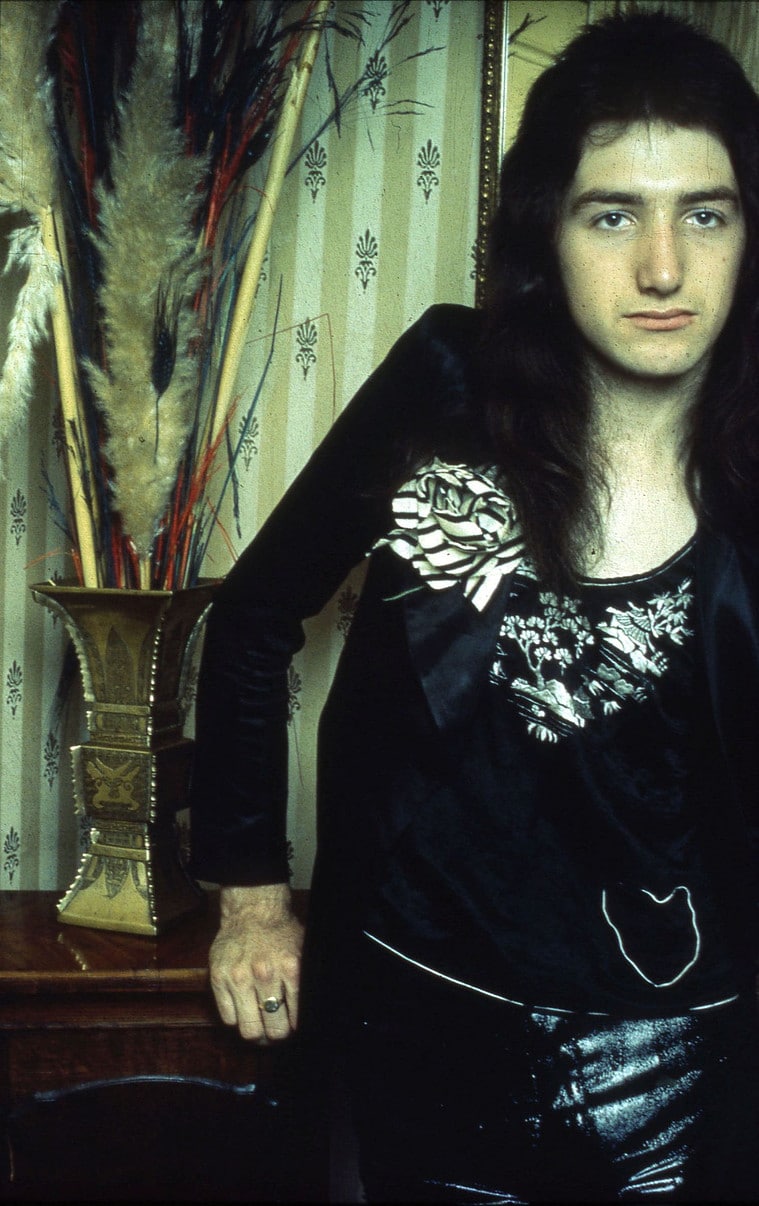
Forget the numbers…96, 192, 384, whatever, it all comes down to the engineering, “I’ve got a dCS Vivaldi DAC in my room which is what, £25,000 or something? It sounds brilliant but I can assure you that if you took an early, crappy DVD-A player from Japan and played something at 192kHz versus 44.1kHz on this Vivaldi DAC, then the Vivaldi DAC will wipe the floor with the crappy player because the dCS is time aligned, it has a huge power supply, the high end is smooth, the jitter is taken care of and so on. The software and the numbers are only a tiny part of the story.”
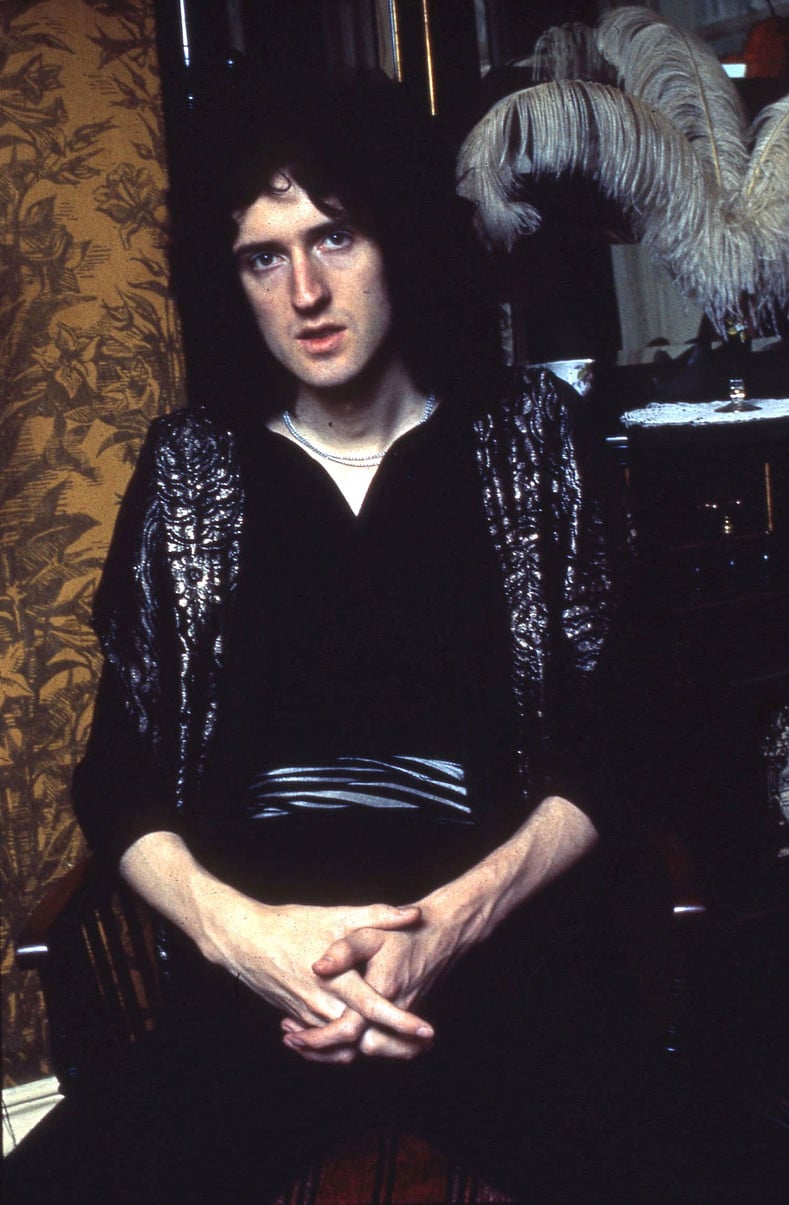
But if you were to use today’s studio hardware and plug-ins, on a level playing field, is there an appreciable difference in the studio between 96kHz and 192kHz? According to Ludwig the difference is small but audible, “It’s more programme dependent, though. For example, it would be more audible from an orchestra than Beyonce.”
In terms of actual mastering, Ludwig offered a few specific examples, “For Made in Heaven, I added EQ to make it a little bit more spacious and enhance high frequencies but in a phase way. For a fair amount of songs I added a measure of warmth in the low end because the digital recorders back then were not as good as now. Actually, for most of the albums, there is very little compression used in the mastering. In fact, for most of the albums there is no compression used at all.”
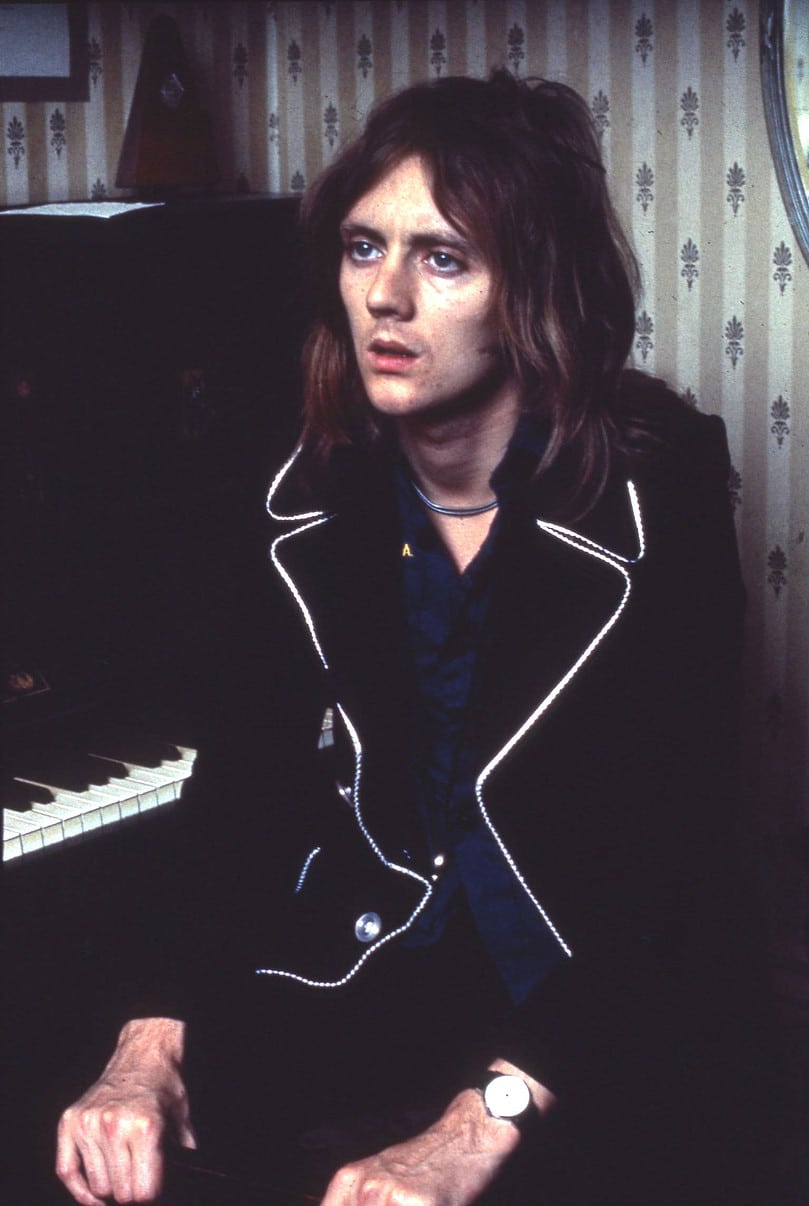
Queen was interested in retaining the dynamics of the original cuts as much as possible. Compression is not always a bad word, though, it’s often the heart of rock’n’roll, “Believe me, when they were originally mixing these Queen records they sure spared no expense with those compressors!” confirmed Ludwig “But having done their artistic thing, the music was then left the way it was. We haven’t then smashed the music to death as many contemporary things have done.”
For the LP, News of the World, this album needed a little bit of brightening, in a subtle way, to bring out more detail. A broad effect to lift frequency detail to emphasise the kick a little bit, “We also compared different vinyl masters with our work and we noticed some recordings that ran at different speeds. We didn’t have notes of the original cut so we had to listen by ear to correct and possible speed variations. For example, there was a Japanese cut of one of the albums, can’t remember which album, but it was quite off speed by about 1.3%, I think. It was too fast and really noticeable.”
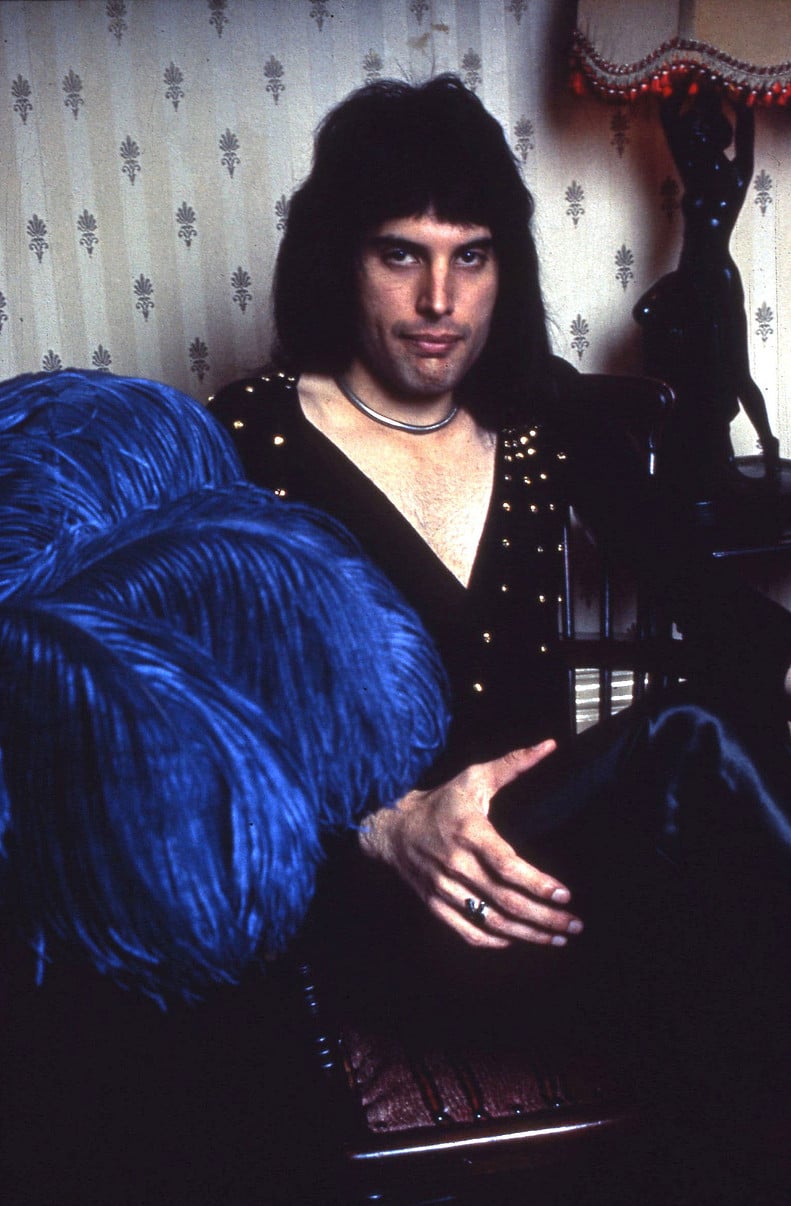
TAPE STANDARDS
One intriguing wrinkle in the mastering process of the Queen albums brought up a fascinating related subject to the entire process that I just had to include here. The subject that had a direct influence on the Queen LPs, yes, but also now triggers a host of questions for other vinyl remasters currently on the market.
The issue is this: when mastering engineers utilise original ¼ inch tape sources to extract the original music, they use a reel-to-reel tape machine. It could be a Studer or an Ampex or something similar. Now, of course, you, as the end user and ultimate customer for the remastered LP, you want as much information extracted from those original tapes and you want all of that information dumped – carefully – onto a slab of heavyweight vinyl. After talking to Ludwig, I now wonder if that is happening with a lot of remastered vinyl out there. Why? The issue surrounds the tape’s so-called ‘guard band’.
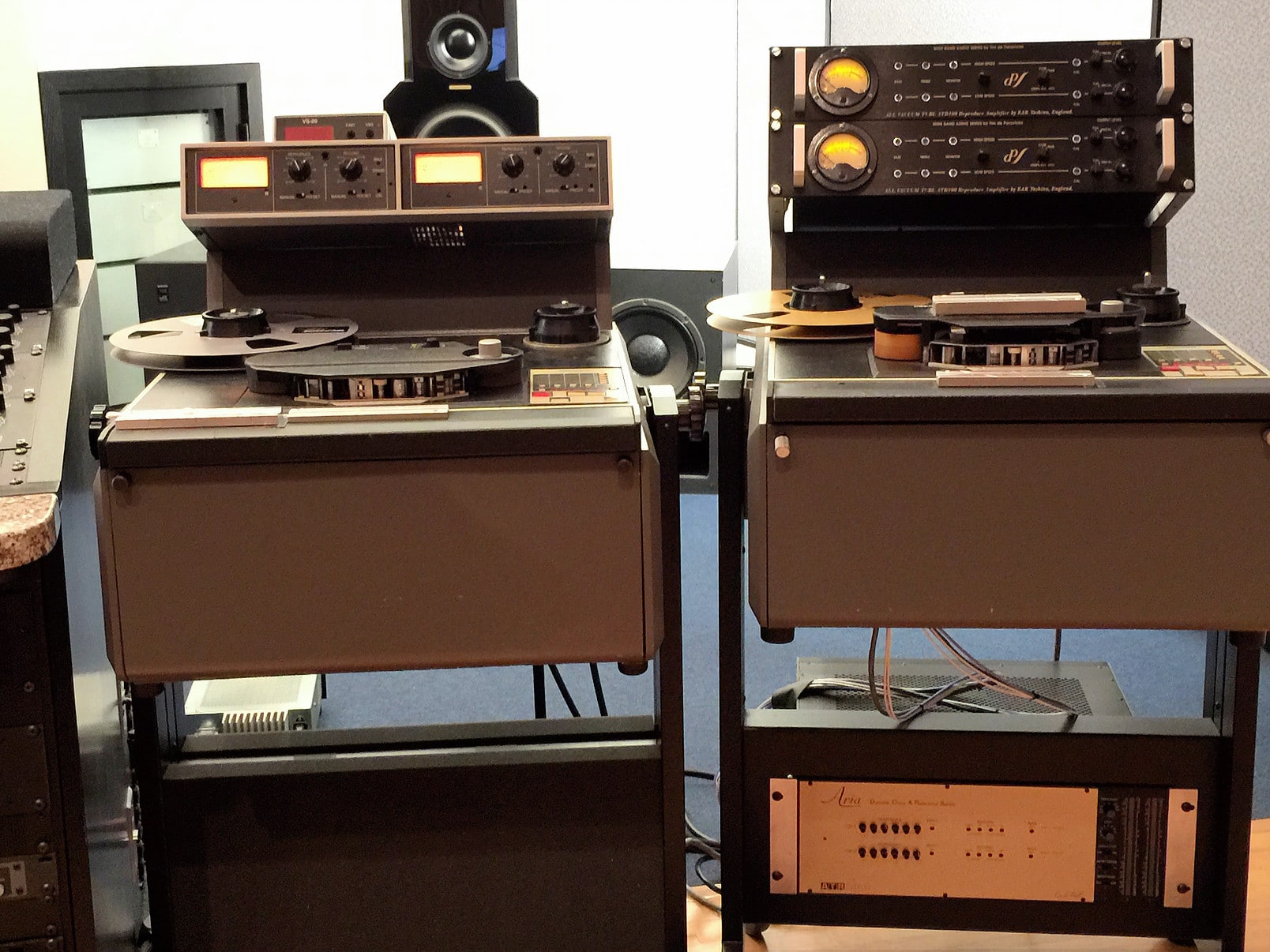
The guard band is a strip of ‘dead’ tape that sits in the middle of the tape or between tracks. So, for a 2-track stereo channel tape, for example, you’ve got a channel of sound at the top of the tape and another channel of sound at the bottom: the stereo left and right channels, in fact. The middle bit is empty. This is the ‘guard band’. The guard band is used to prevent ‘cross talk’: where one signal from one channel can leak into another channel. That is, with crosstalk, you would hear the left stereo channel music appearing on the right channel or vice-versa. The guard band prevents this.
Here is Ludwig’s take on the problem, “Most of the Queen albums I worked on were via ¼ inch tape. Now, there are two different standards for ¼ inch tape. There’s the European standard that had only ¾mm of guard band between the left and right channel whereas the American and Canadian and a lot of the rest of the world had a 2mm guard band.
“We have both types of tape playback heads here to handle both standards and we have a magnetic track viewer where I can look at the ¼ inch master and see whether they use the so-called European Butterfly head or the USA-type, 2mm variant. Hence, I can then play that tape back with the exact head that it was originally recorded on. That makes a big difference. If you use the wider European Butterfly heads to play the USA-type tape with a 2mm guard band, you capture a lot more tape hiss of material that has not been recorded.
“Conversely, if I played back the wide span European recordings with the narrower US tape heads (which a lot of American mastering studios use – they don’t know about this, never mind bother to buy an extra head) then you get a fringing effect. This is a muddied bass because it’s picking up more of the leaking bass frequencies. That is, there are more bass frequencies on the tape than the head can actually play.
“Also, if you look at the amount of oxide that is magnetised from the heads, you’ll realise that more of the European tape is magnetised than the American. If you had the American tape and played it back at 19.5ips then you would have the same amount of oxide passing the heads then the European running at just 15ips. There is a sonic difference with that. It’s like having the right playback stylus. Hence, we matched the right head to the right tape and all the tapes varied.”
The next time you buy a remastered LP, ask yourself, “Did they use the correct tape head during the remastering this album?” I reckon if its a Bob Ludwig production, then that answer is going to be, “Yes.” From anyone else, though? Hmmm.
HALF SPEED WITH MILES SHOWELL
One of the highlights of the box set has been the half-speed mastering. As you can imagine, the process demands that an album is mastered at half the normal speed using a range of specially built hardware for the process and plenty of ‘mastering magic’ to boot.
Aurally, the half-speed master is something to behold. Cymbals sound bronzier, voices are more lifelike and emotive and easier to understand. Bass is faster, deeper and more defined, offering improved pitch definition and clarity. Micro and macro dynamics are effortless. The silence between tracks or, especially during the quieter passages within the music, is…well, quiet. This sonic accumulation has the effect of an overall increase in clarity and realism that can’t be denied.
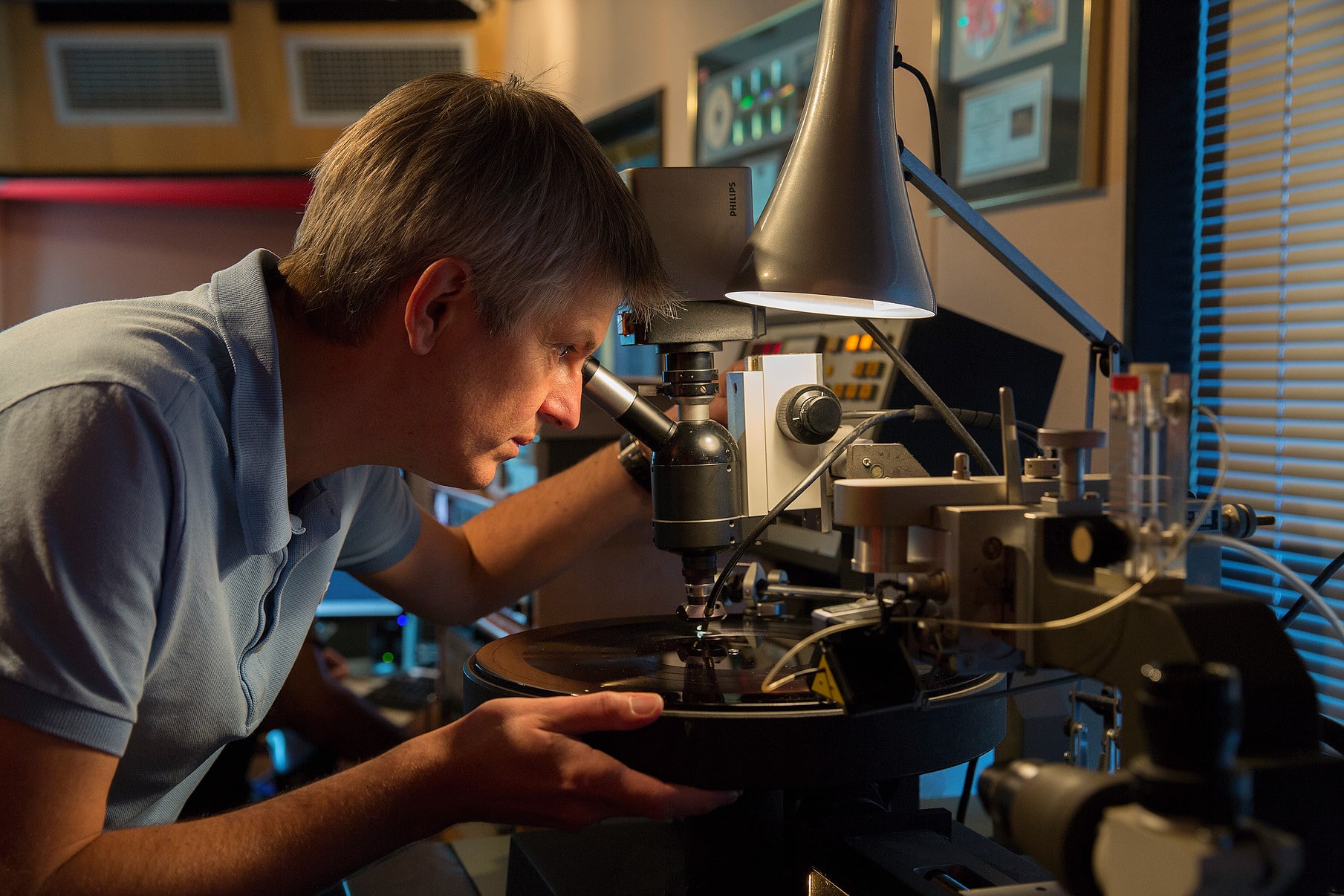
The process itself is one that is approved by half speed mastering engineer, the man who is the world expert in this particular field, Abbey Road’s Miles Showell, as it makes it easier for the cutter head to transcribe the signal, as a consequence of reducing the accelerations and velocities. The current feed to the cutter is approximately a quarter to a third of a real time cut and the damping is reduced which minimises overshoot and cutting inaccuracies. Also, the reduction in heating of the cutter coils improves the linearity. The high frequency phase response is dramatically improved too, which increases the accuracy of the stereo image.
For the Queen cuts, “I wanted to keep the cut as pure as possible so I’ve gone for absolute minimal and, in most cases, no extra filtering. Also, one of the jobs I did for this cut was remove sibilance. That meant treating every individual ’s’ on every song and on every album. The total time spent cutting these albums was around 120 hours,” said Showell.
For a real-time, normal cut, you’d put a high frequency limiter on to catch any nasty ’s’ to prevent sibilance but that same limiter would also catch bright guitars, high hats and snares which destroys audio. Showell had the luxury of working from Bob Ludwig’s high resolution digital files so that he could target only the sibilance on the vocals, thousands of tiny individual tiny edits. “Everything else is intact. There’s no scattergun approach. It’s a bespoke thing,” said Showell.
The Queen box set shows how far half speed has come, in the hands of Miles Showell, since it was created by the legendary Stan Ricker, who recently past away, “I’m only doing what he [Ricker] started. It was his work that fired up my imagination for this.”
REGA’S QUEEN TURNTABLE: TAKE A GANDY
With the new Queen box set there is also a new Rega turntable that you can buy to play the things. The new Queen turntable is based upon the Rega RP1 but with a different plinth and features stunning Queen artwork (in performance terms, the deck is very close to the RP1). This is not a Rega turntable, per se, though and it doesn’t have a Rega brand, it’s an OEM production for Queen.
“We got involved with Queen’s artistic director who gave us his parameters,” said Rega boss, Roy Gandy, “at that time we were looking at a whole new plinth concept. I thought we needed something more startling, cosmetically, so we used the opportunity.”
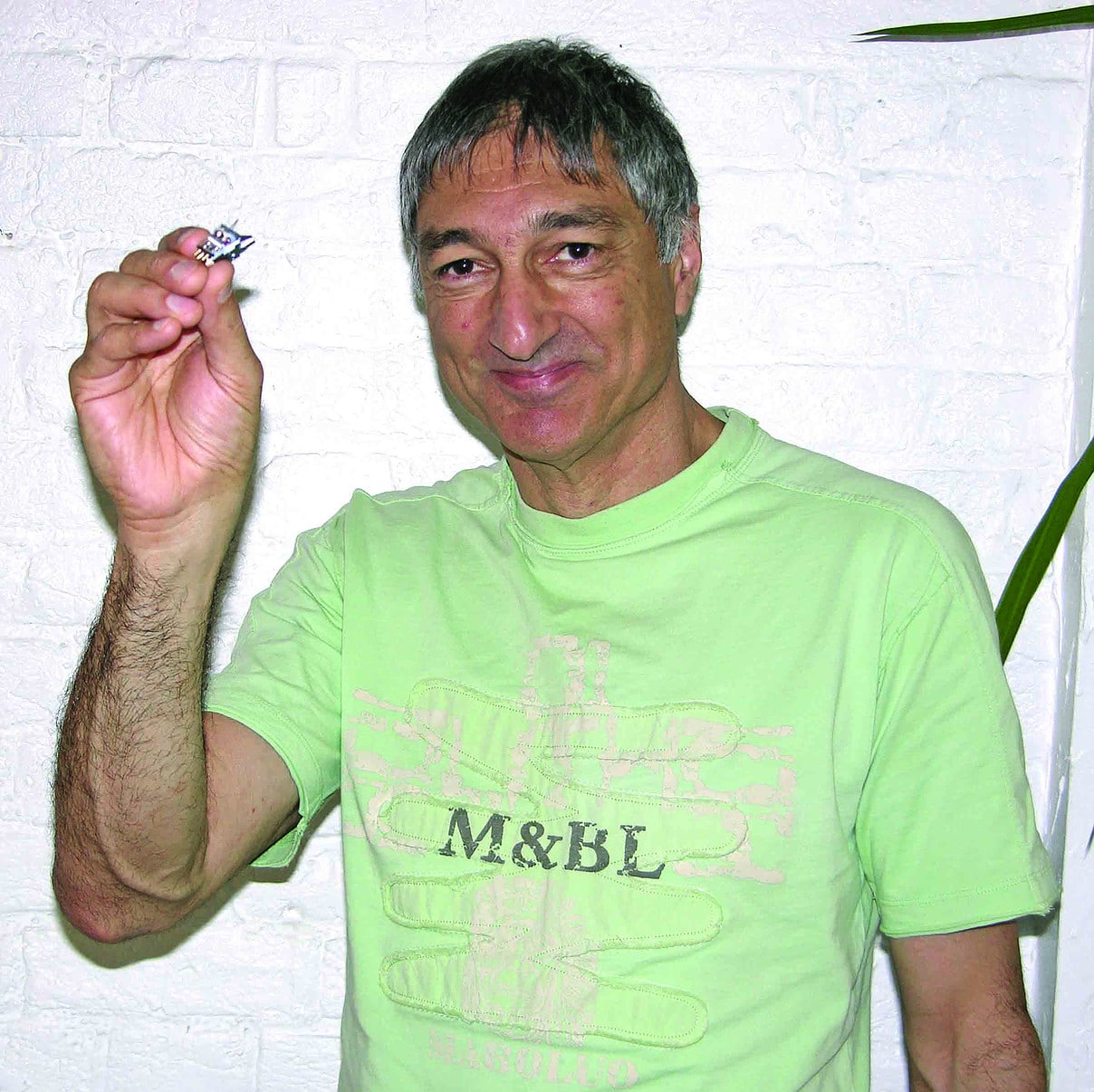
The plinth has been developed to provide a low cost with a high finish and is screen-printed instead of the normal laser printing to save money because of the large number of units that had to be produced. The new lighter, particle board plinth is of a similar density to the original. Also used on expensive furniture, it arrives with a filmed-covered, acrylic skin (the original RP1 uses a painted-on melamine), “The acrylic film helps to produce a finish which is as as good as a piano-finish plinth,” said Gandy.
Only 2,000 Queen Turntables were initially produced this year. Queen will consider making more but, a the time of writing, no decisions have been made yet. The current price of the turntable is £315 and it is available from all Rega dealers.

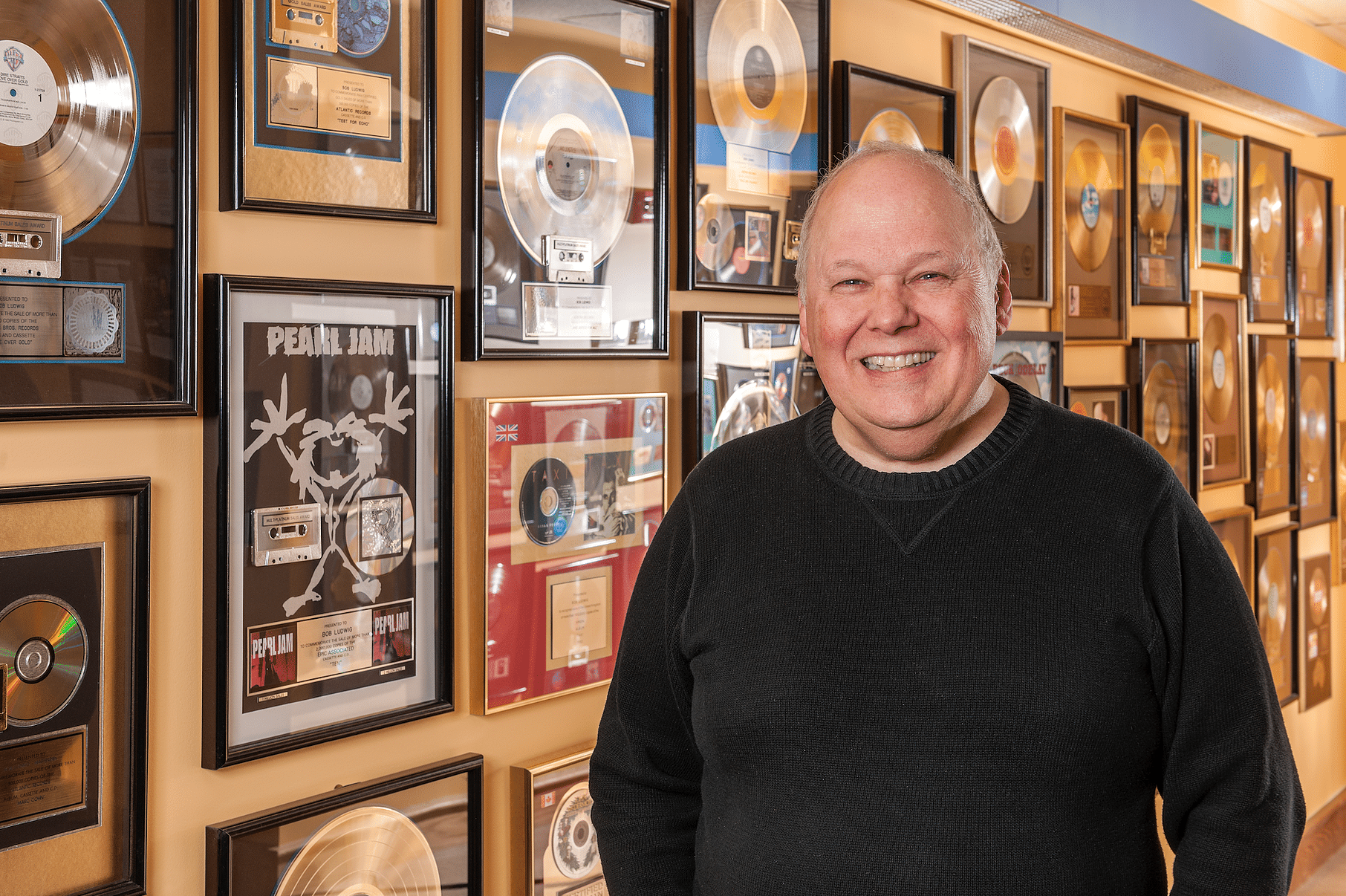
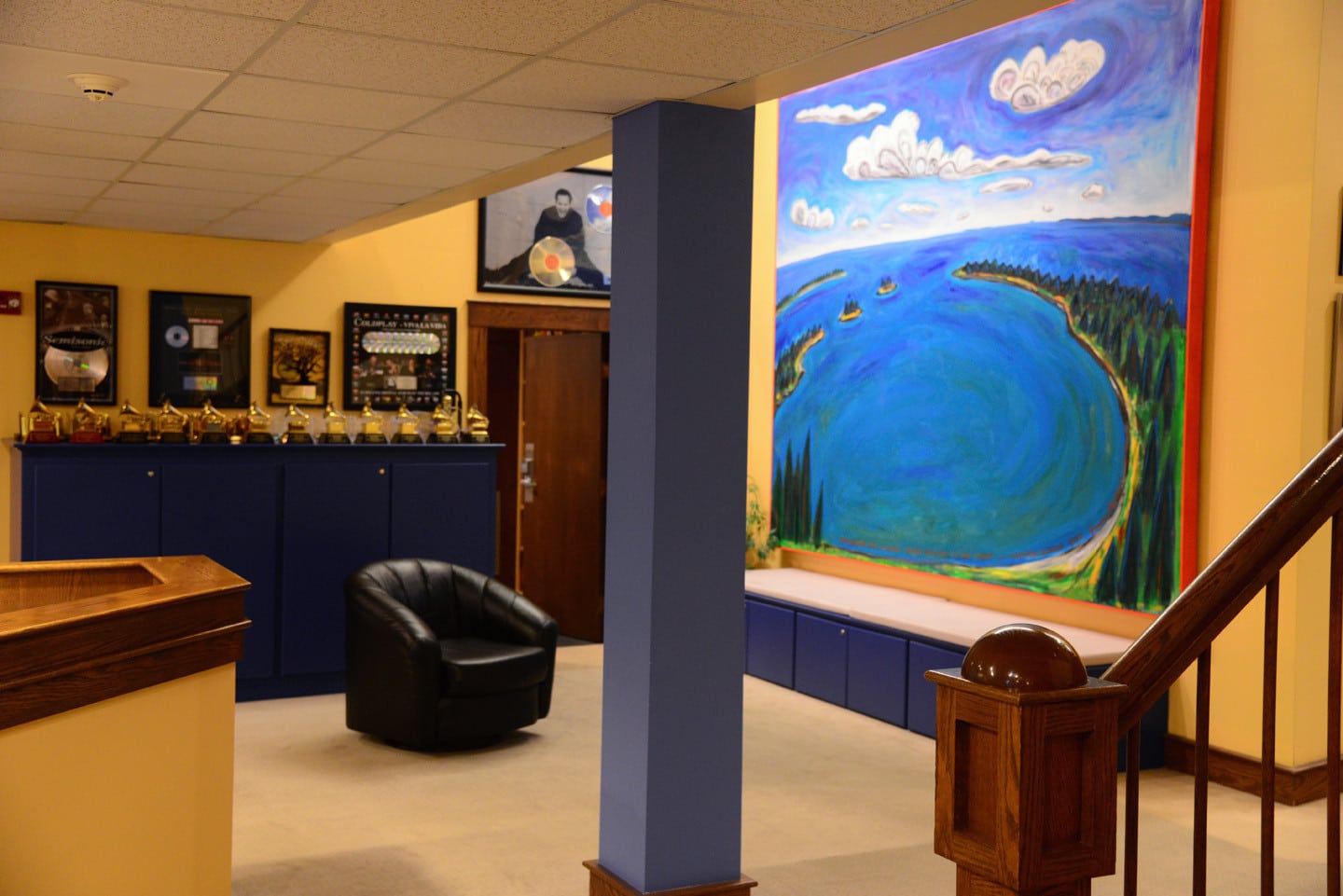
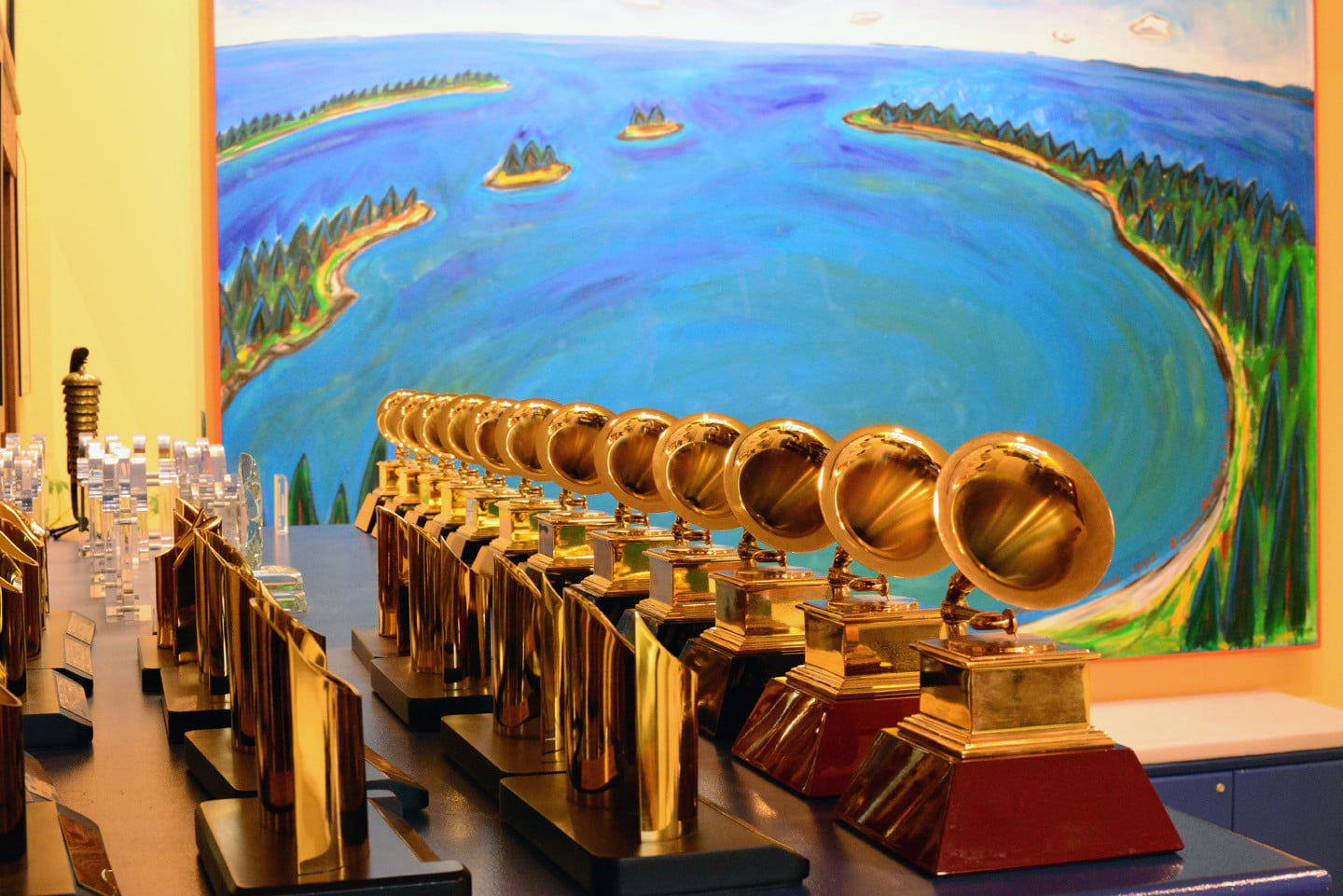
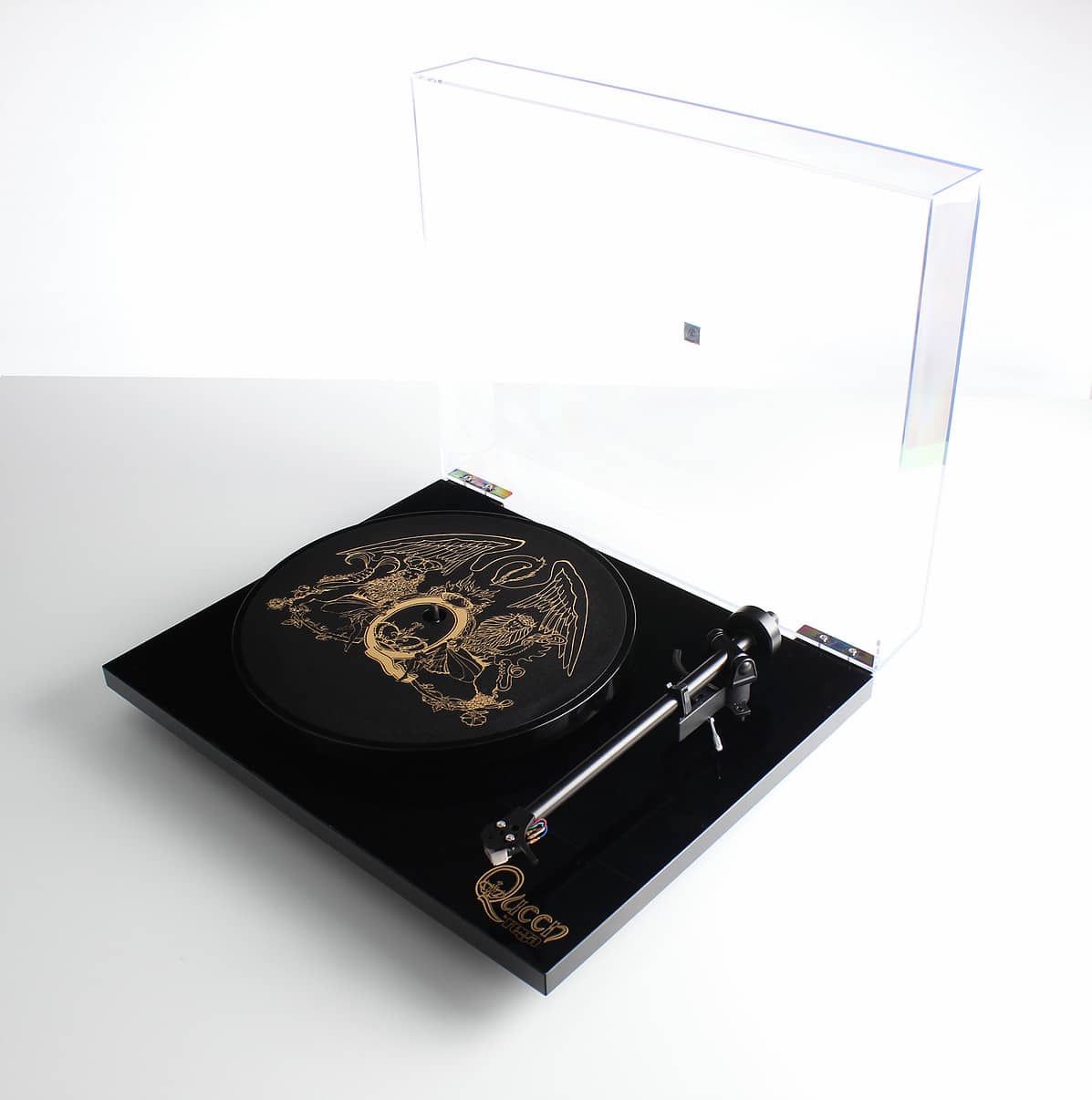


Thanks for this really insightful article.
And thanks for your kind comments 🙂
Excellent, this article made my dag as a follower of Queen, thank you 🙂
Glad you liked it, Magnus